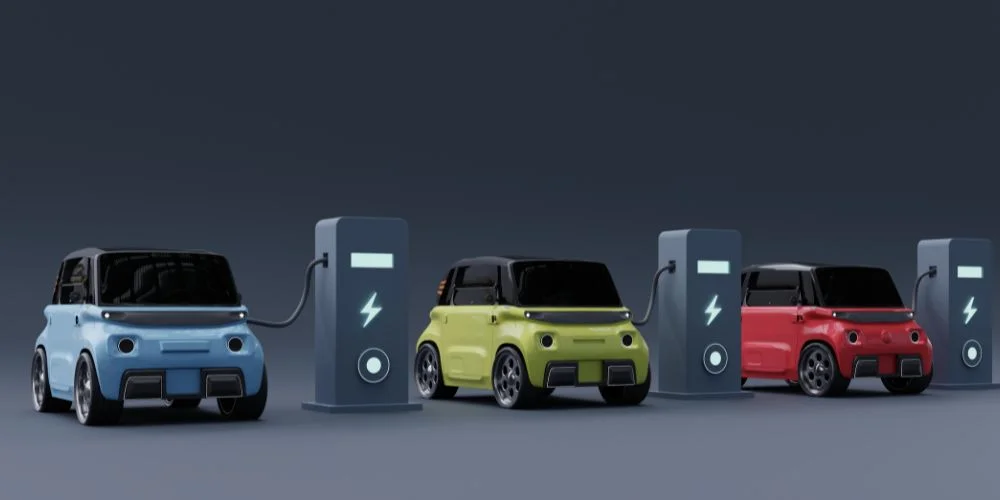Electric vehicles (EVs) have emerged as a transformative force in the automotive industry, promising to revolutionize our commute and reduce our carbon footprint. This analysis provides a comprehensive overview of the current state of the electric vehicle market, highlighting key trends, major players, challenges, and prospects.
Market Overview
The global electric vehicle market is experiencing remarkable growth, driven by increasing environmental awareness, government incentives, and advancements in battery technology. Electric vehicles offer a sustainable and eco-friendly alternative to traditional internal combustion engine vehicles, as they produce zero tailpipe emissions and contribute to reducing greenhouse gas emissions.
The approximate decision of the Techgolly market analysis team is that the global Electric Vehicle market was valued at least USD 650 billion in 2024 and continues to be projected to reach USD 1,583.66 billion by 2030. Growth will continue at a compound annual growth rate (CAGR) of 14% to 16% from 2024 to 2030.
The market encompasses a wide range of electric vehicles, including battery electric vehicles (BEVs), plug-in hybrid electric vehicles (PHEVs), and hybrid electric vehicles (HEVs). Factors such as improving charging infrastructure, longer driving ranges, and cost reductions make electric vehicles more appealing to consumers and drive the market’s growth.
Key Market Trends
The electric vehicle market is witnessing several prominent trends shaping its growth and direction.
Government Initiatives and Incentives
Governments worldwide are implementing policies and incentives to promote the adoption of electric vehicles. These include subsidies, tax credits, rebates, and grants aimed at reducing the upfront cost of purchasing electric vehicles and encouraging the development of charging infrastructure. Government support drives consumer confidence and boosts electric vehicle adoption rates.
Technological Advancements in Batteries
Advancements in battery technology, particularly in energy density, charging speed, and cost reduction, are key trends in the electric vehicle market. Lithium-ion batteries, the dominant technology in EVs, are continuously improving, leading to increased driving ranges and quicker charging times. Research and development in solid-state batteries and other emerging technologies hold promise for even more significant advancements in the future.
Growth in Charging Infrastructure
Expanding and improving charging infrastructure is critical for widespread electric vehicle adoption. Public and private entities are investing in developing charging stations, including fast and ultra-fast chargers, to alleviate range anxiety and make electric vehicles more convenient and accessible to consumers. Additionally, advancements in wireless charging technology offer the potential for further convenience and ease of use.
Increased Adoption of Electric SUVs and Crossovers
Electric sport utility vehicles (SUVs) and crossovers are gaining popularity. Consumers increasingly opt for electric SUVs due to their spaciousness, versatility, and higher driving positions. Automakers are responding to this demand by introducing electric SUV models with competitive driving ranges and appealing features, further diversifying the electric vehicle market.
Challenges
The electric vehicle market faces several challenges that must be addressed to ensure its continued growth and widespread adoption. Some notable challenges include.
Range Anxiety
Range anxiety, the fear of running out of battery charge before reaching a charging station, remains a significant concern for potential electric vehicle buyers. Improving battery technology to offer longer driving ranges and expanding the charging infrastructure can help alleviate this fear and boost consumer confidence in electric vehicles.
Charging Infrastructure Gaps
Inadequate and inconsistent charging infrastructure can deter potential electric vehicle buyers. Addressing the gaps in charging infrastructure by deploying more charging stations in urban and rural areas, ensuring compatibility and standardization, and investing in fast-charging networks are essential steps toward overcoming this challenge.
High Initial Costs
The upfront cost of electric vehicles is still higher than traditional gasoline-powered vehicles, primarily due to the cost of batteries. Achieving cost parity with internal combustion engine vehicles and reducing the cost of electric vehicles through technological advancements and economies of scale are critical to making them more accessible to a broader consumer base.
Future Outlook
The electric vehicle market is poised for significant growth and transformation, fueled by technological advancements, regulatory support, and consumer preferences for sustainable transportation options.
Increased Adoption of Autonomous Electric Vehicles
Integrating autonomous driving technologies with electric vehicles is a promising future trend. Autonomous electric vehicles will offer convenient and eco-friendly transportation solutions, reducing the transportation sector’s overall environmental impact.
Electrification of Commercial Fleets
The electrification of commercial fleets, including delivery vans, buses, and trucks, will be crucial in reducing carbon emissions and promoting sustainability. Governments and businesses recognize the benefits of electrifying commercial fleets to achieve environmental targets and operational cost savings.
Energy Integration and Grid Synergy
Integrating electric vehicles with renewable energy sources and the electricity grid is a strategic trend. Electric vehicles can act as a distributed energy resource, providing energy storage and grid balancing capabilities. Smart charging solutions will optimize the charging process, considering grid demands and renewable energy availability.
Conclusion
The electric vehicle market is set to redefine the future of transportation, offering a cleaner, more sustainable alternative to traditional vehicles. Overcoming challenges, advancing battery technology, improving charging infrastructure, and making electric vehicles more affordable are key to accelerating their adoption. With continued innovation and support from governments and industries, electric vehicles will play a central role in achieving a greener and more sustainable transportation ecosystem.










